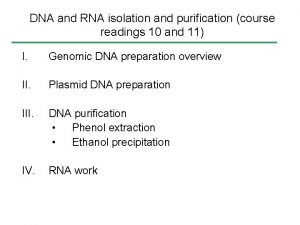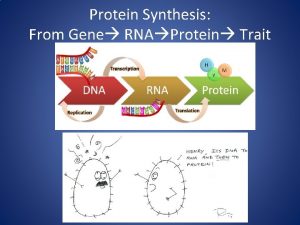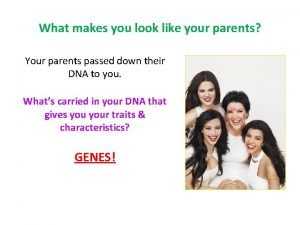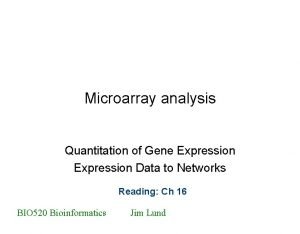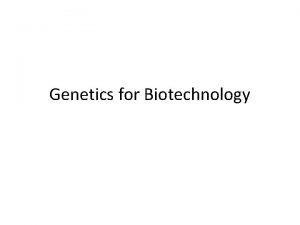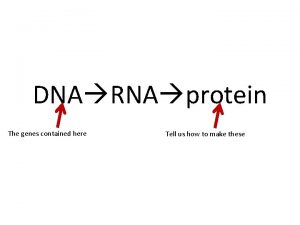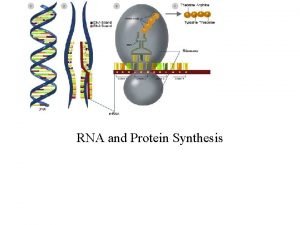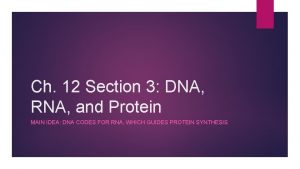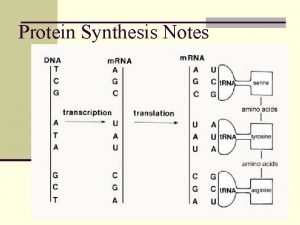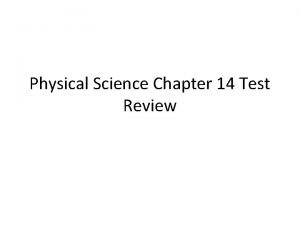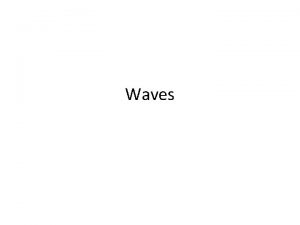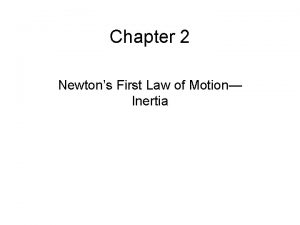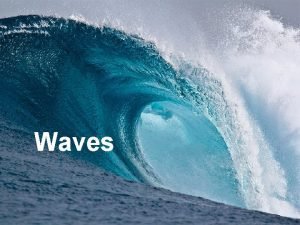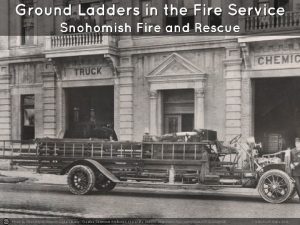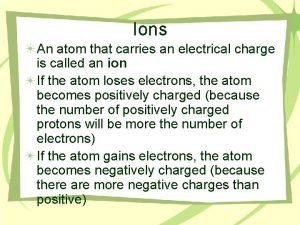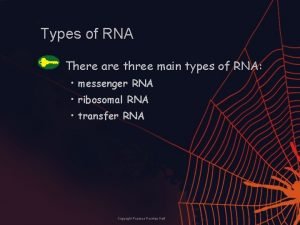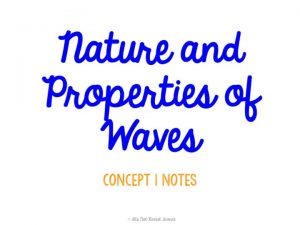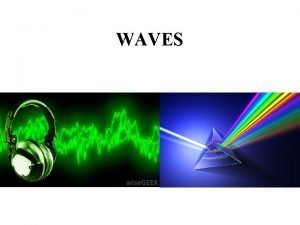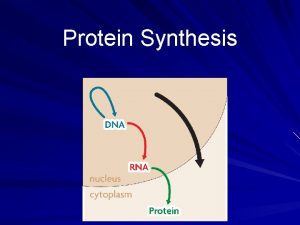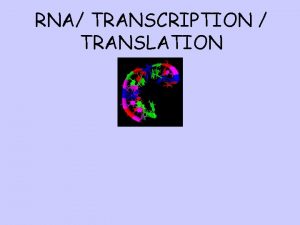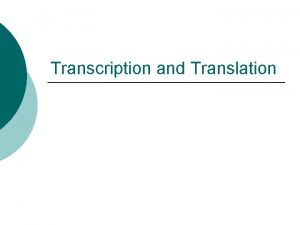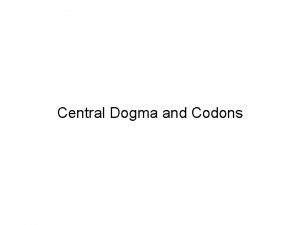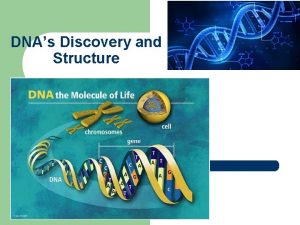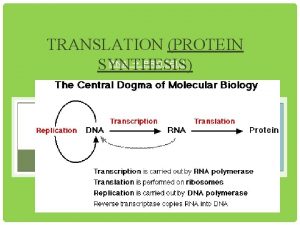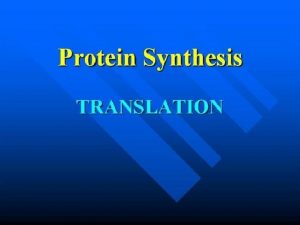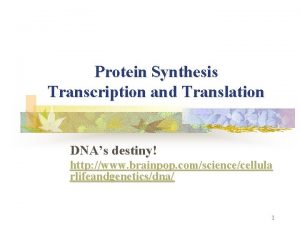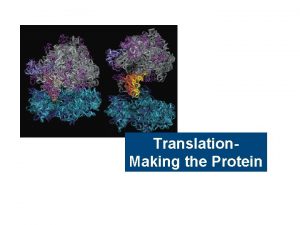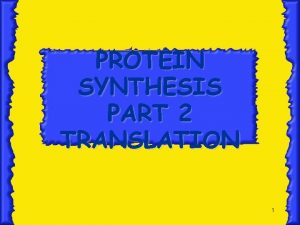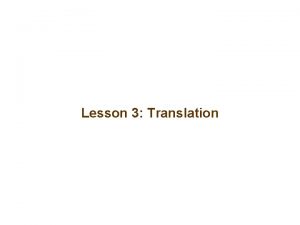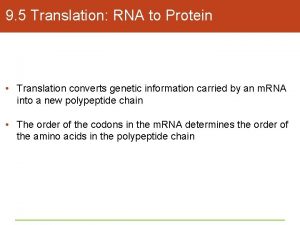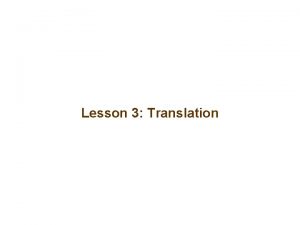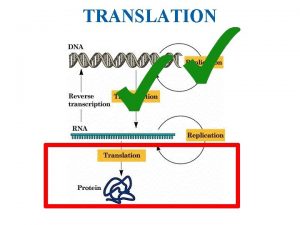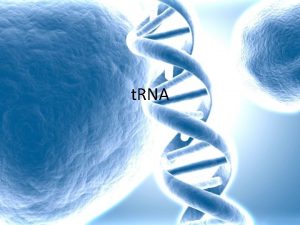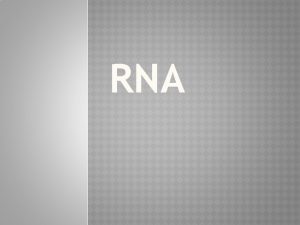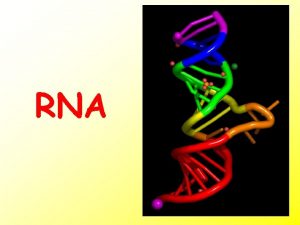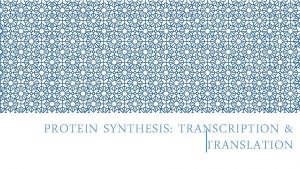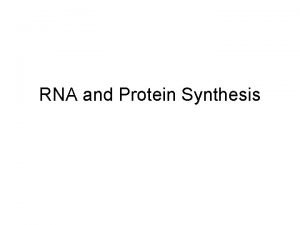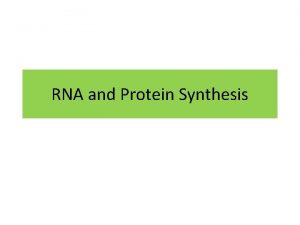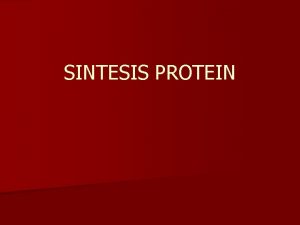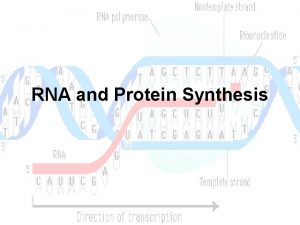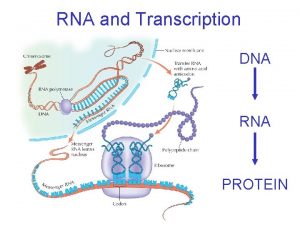Translation From RNA to Protein RNA carries DNAs

































- Slides: 33

Translation: From RNA to Protein

RNA carries DNA’s instructions. The Central Dogma of Molecular Genetics states that information flows in one direction from DNA to RNA to Proteins.

Universal Code

t. RNA • To translate the m. RNA transcript into a protein, the codons (3 bases) must be read one at a time to assemble amino acids in the right sequence • This occurs in the ribosome with the help of transfer RNA (t. RNA)

Structure of t. RNA amino acid glu A t. RNA molecule bound to an amino acid is called an amino - acyl t. RNA ( aa-t. RNA) anticodon

t. RNA

Structure of t. RNA • Folded RNA molecule with an anticodon loop – the anticodon contains a nucleotide triplet which is complementary to the m. RNA codon • Each t. RNA carries a particular amino acid corresponding to its anticodon • The process of adding an amino acid to a t. RNA is called aminoacylation

Reusing t. RNA

How Many Codon Permutations? A U C G 3 4 = 64 ?

Universal AND Redundant

The Wobble Hypothesis • Though there are 61 codons coding for amino acids, we do not need 61 types of t. RNA • The 3 rd nucleotide in the anticodon is often less important than the first two (binds weakly / not specific) • The third nucleotide is in the “wobble” position

The Wobble Hypothesis • UCC and UCU both code for serine

The Ribosome • A ribosome is a complex of protein combined with ribosomal RNA (r. RNA) • 2 subunits : small and large 3 binding sites for t. RNA • P site Large ribosomal subunit holds one aa - t. RNA and the growing chain of amino acids • A site receives the t. RNA with the next amino acid to be added to the chain E P A • E site releases the used t. RNA back into the cytoplasm Small ribosomal subunit

Phases of Translation 1. Initiation 2. Elongation 3. Termination

Initiation • Begins when large and small ribosome subunits associate with an m. RNA molecule. • The first aminoacyl-t. RNA of the new protein chain becomes bound to the start codon (AUG) • The initiator methionine-t. RNA forms a complex with the small subunit of the ribosome. • The complex joins to the 5’ cap and then scans until it finds the AUG-start • The large subunit then binds to complete the ribosome • A correct initiator establishes the reading frameseries of codons

Initiation 3’ 5’ E P A t. RNA G G U A U G A U C G G U U A G A U C P S P S P S P S P S 5´ 3´

Initiation • A site (aminoacyl) is where incoming aminoacyl-t. RNA, carrying the next amino acid to be added to the polypeptide chain, binds to the m. RNA • P site (peptidyl) is where the t. RNA , carrying the growing polypeptide chain is bound • The E site (exit) is where an exiting t. RNA leaves the ribosome.

Initiation

Elongation The cycle of elongation has 3 steps: An initiator t. RNA with attached methionone is bound to the P site to begin process. • 1. An aminoacyl t. RNA binds to the A site • 2. Peptidyl transferase cleaves the aa from the P site t. RNA and bonds it to the amino acid on the A site t. RNA • 3. Ribosome moves along the m. RNA to the next codon and brings the t. RNA with the growing polypeptide to the P site and moving the empty t. RNA to the E site. • After the ribosome has moved over one codon, the empty t. RNA in the E site is released and the cycle is ready to begin again

Elongation E P A G G U A U G A U C G G U U A G A U C P S P S P S P S P S 5´ 3´

Elongation E P A G G U A U G A U C G G U U A G A U C P S P S P S P S P S 5´ 3´

Elongation E P A G G U A U G A U C G G U U A G A U C P S P S P S P S P S 5´ 3´

Elongation E P A G G U A U G A U C G G U U A G A U C P S P S P S P S P S 5´ 3´

Elongation Growing polypeptide chain E P A G G U A U G A U C G G U U A G A U C P S P S P S P S P S 5´ 3´

Termination • There is no t. RNA with the complementary anticodon for the stop codon • A protein release factor binds to the stop codon in the A site • This cleaves the polypeptide from the t. RNA and breaks apart the ribosomal sub-units

Termination protein Release factor (protein) E P A U U C C A A C G G U A U C G G U U A G A U C S P S P S P S P S P S P S 3´ m. RNA

Termination

Electron Micrograph

Summary



Structure of t. RNA amino acid Ileu 3’ 5’ anticodon A t. RNA molecule bound to an amino acid is called an amino - acyl t. RNA ( aa-t. RNA)

Polysome
 Dna rna protein diagram
Dna rna protein diagram Rna protein synthesis
Rna protein synthesis Rna and protein synthesis study guide
Rna and protein synthesis study guide Protein
Protein Dna to protein steps
Dna to protein steps Microarray analysis
Microarray analysis Totipotent cell
Totipotent cell Dna rna protein synthesis homework #2 dna replication
Dna rna protein synthesis homework #2 dna replication Mutations quiz
Mutations quiz Dna rna protein
Dna rna protein Section 12 3 rna and protein synthesis
Section 12 3 rna and protein synthesis Rna transfer
Rna transfer Chapter 12 section 3 dna rna and protein
Chapter 12 section 3 dna rna and protein Protein pump vs protein channel
Protein pump vs protein channel Protein-protein docking
Protein-protein docking Unlike dna rna contains
Unlike dna rna contains Translation protein synthesis
Translation protein synthesis Cisco voice translation rule
Cisco voice translation rule Parent functions
Parent functions Noun phrases
Noun phrases Communicative translation theory
Communicative translation theory Physical science chapter 14 test
Physical science chapter 14 test With reference to waves what is a disturbance
With reference to waves what is a disturbance When burl and paul stand on the scaffold
When burl and paul stand on the scaffold Is a disturbance that transfers energy from place to place
Is a disturbance that transfers energy from place to place What is a rhythmic disturbance that carries energy
What is a rhythmic disturbance that carries energy Ifsta elibrary
Ifsta elibrary Isotope charge
Isotope charge Three main types of rna
Three main types of rna Roles of first aid
Roles of first aid Rhythmic disturbance that carries energy
Rhythmic disturbance that carries energy Absorbed waves
Absorbed waves Rhythmic movement that carries energy through matter
Rhythmic movement that carries energy through matter A rhythmic disturbance that carries energy
A rhythmic disturbance that carries energy
